Abstract
Paramyxovirus-1 (PMV-1) infection was diagnosed in racing pigeons in Ontario during 1985, but it was not until January 1989, that the virus was isolated from feral pigeons (Columba livia) in this province. During an 18 month period beginning January 1988, a total of 43 feral pigeons was submitted to the Wildlife Diseases Laboratory, Pathology Department, Ontario Veterinary College. A history of neurological signs accompanied most of the birds. Tissues from 29 birds were submitted for PMV-1 isolation. Allantoic inoculation of embryonated chicken eggs yielded PMV-1 in 10 of the pigeons submitted. On the basis of histological criteria, we believe that 12 other birds were also infected with PMV-1.
Gross pathological changes were unremarkable. Lymphplasmacytic interstitial nephritis was observed histologically in all birds from which PMV-1 was isolated. Other lesions seen, in decreasing frequency of occurrence, were lymphoplasmacytic interstitial hepatitis and multifocal hepatic necrosis, lymphoplasmacytic interstitial pancreatitis, nonsuppurative encephalitis and myelitis.
The existence of PMV-1 in feral pigeons poses a potential threat to the poultry population since there is ample opportunity for mingling with poultry under open housing management. There is also a concern that pigeons may harbor the virus, perhaps in the kidney, and become chronic carriers and potential long-term disseminators of the disease.
Full text
PDF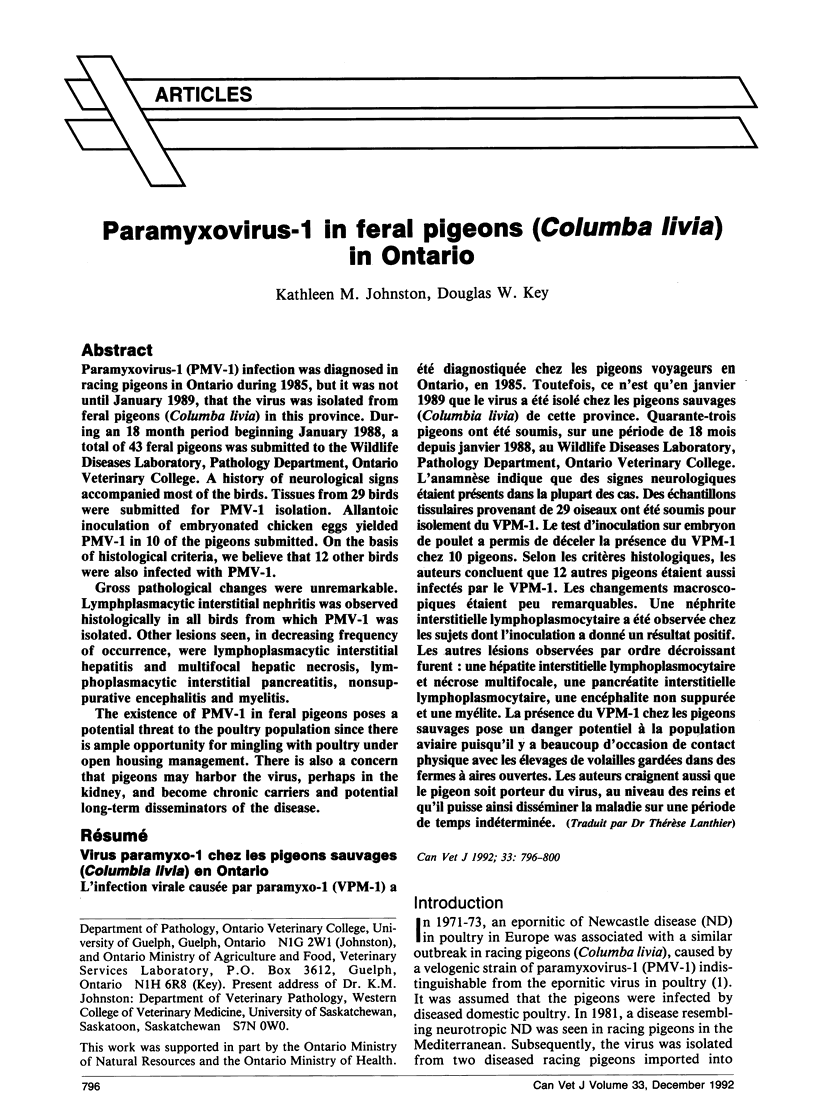
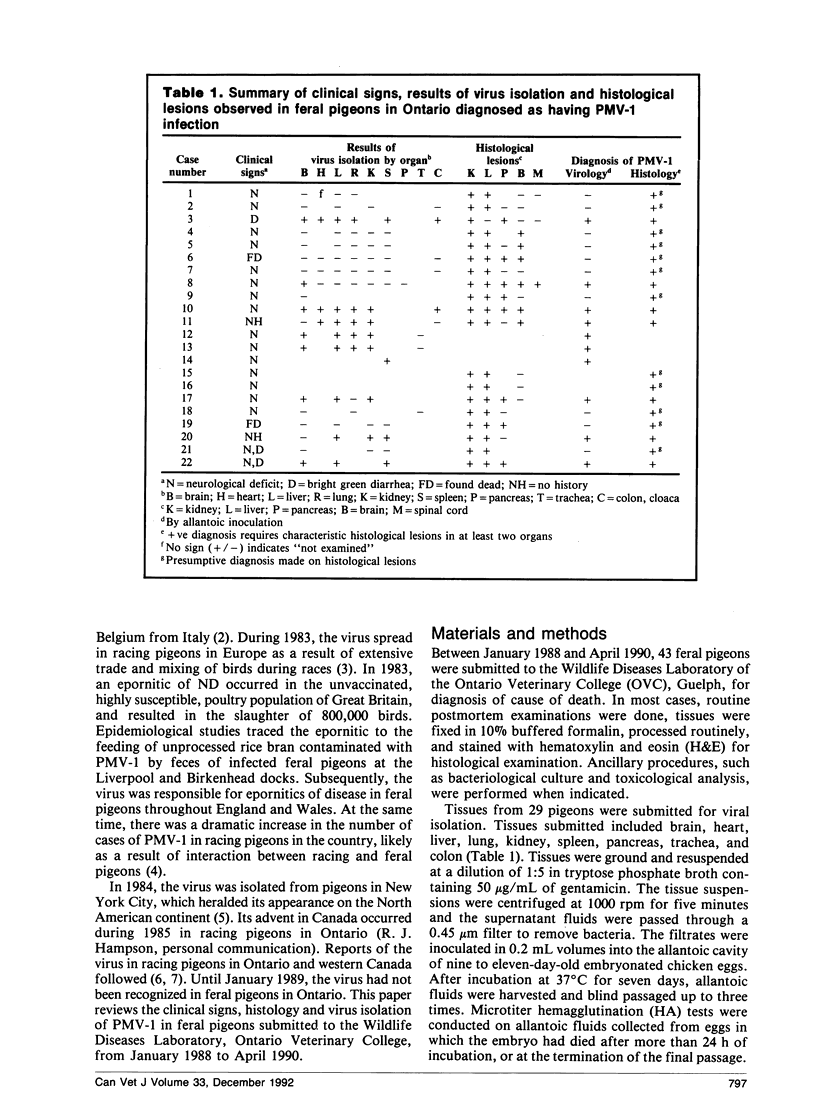
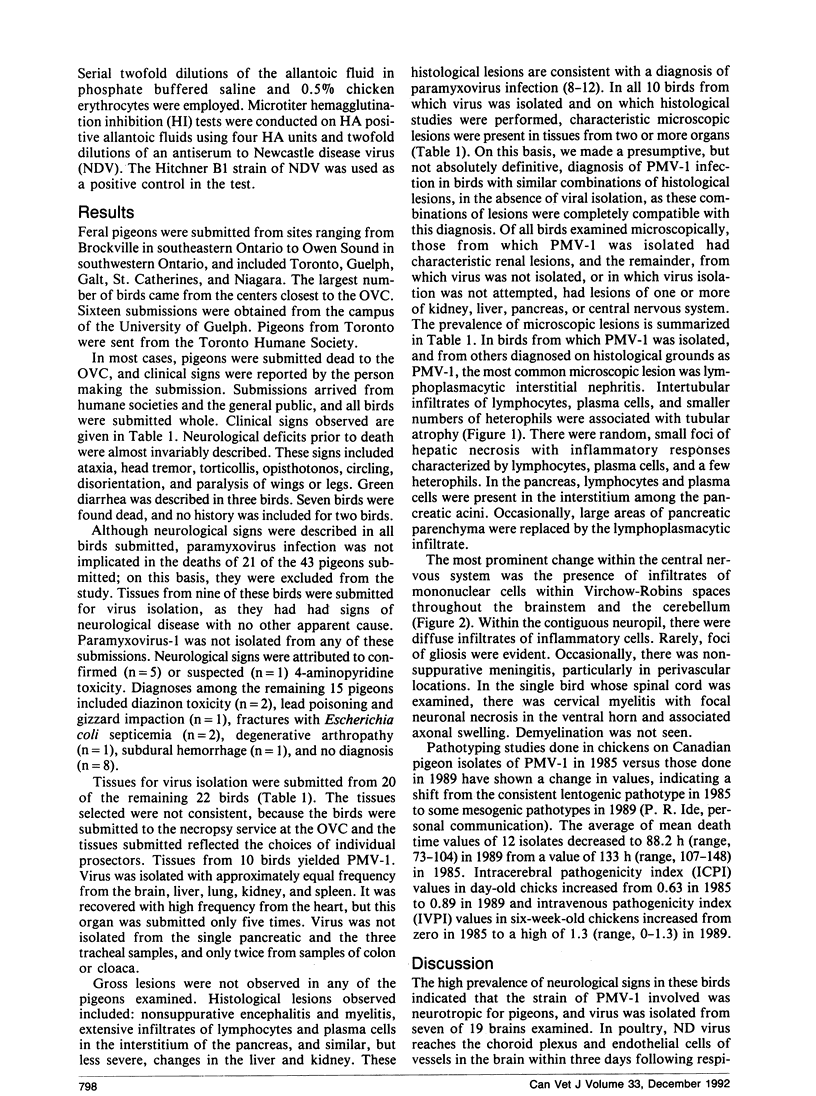
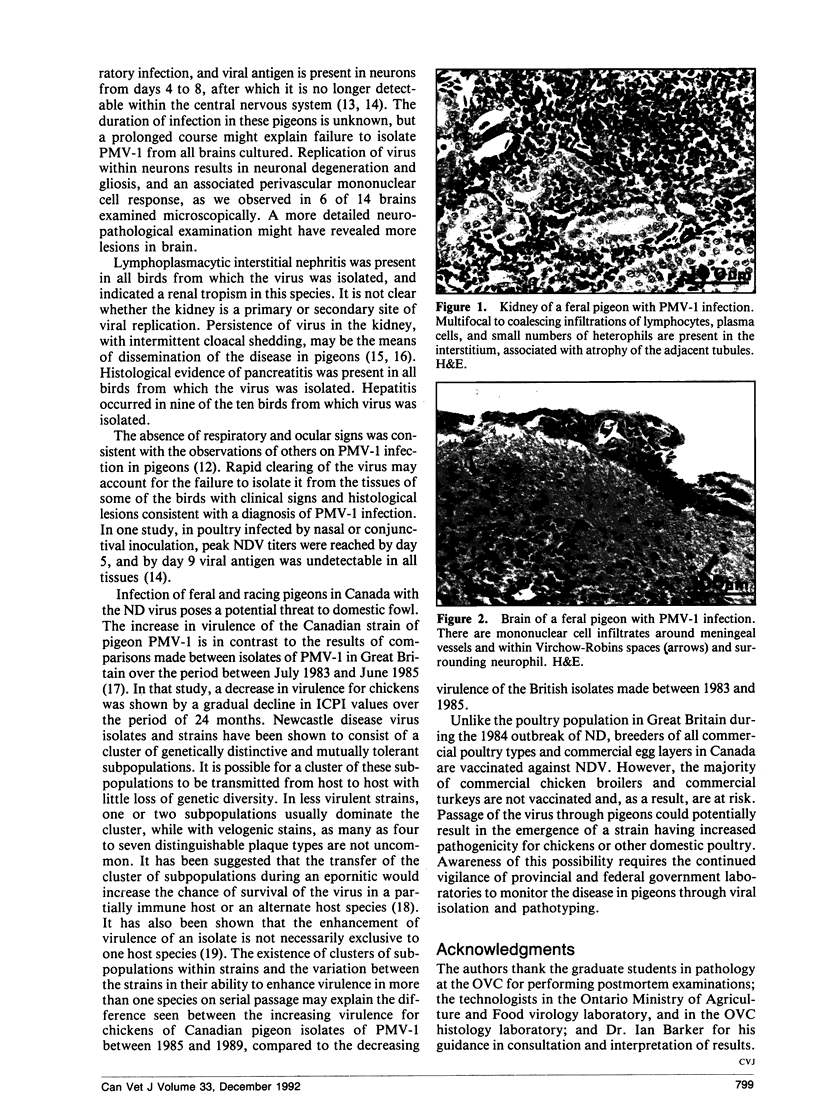
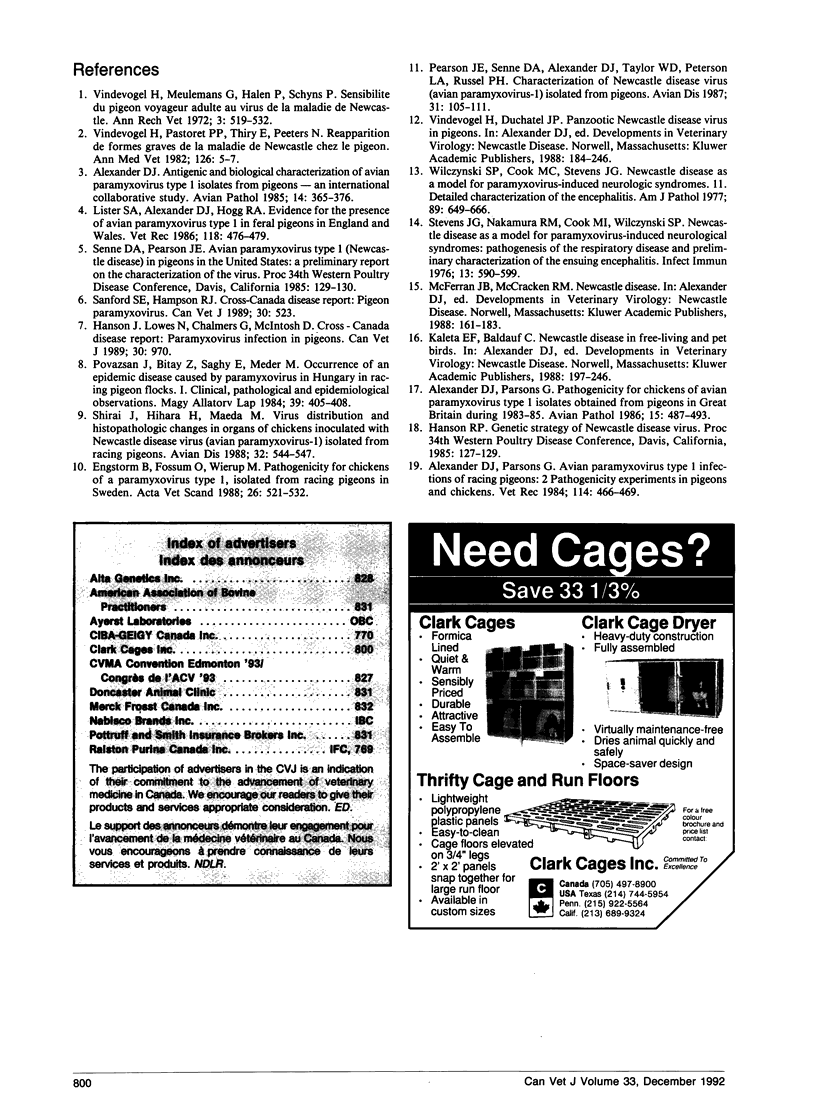
Images in this article
Selected References
These references are in PubMed. This may not be the complete list of references from this article.
- Alexander D. J., Parsons G. Avian paramyxovirus type 1 infections of racing pigeons: 2 pathogenicity experiments in pigeons and chickens. Vet Rec. 1984 May 12;114(19):466–469. doi: 10.1136/vr.114.19.466. [DOI] [PubMed] [Google Scholar]
- Engström B., Fossum O., Wierup M. Pathogenicity for chickens of a paramyxovirus type 1, isolated from racing pigeons in Sweden. Acta Vet Scand. 1985;26(4):521–532. doi: 10.1186/BF03546524. [DOI] [PMC free article] [PubMed] [Google Scholar]
- Hanson J., Lowes N., Chalmers G., McIntosh D. Western Canada. Paramyxovirus infection in pigeons. Can Vet J. 1989 Dec;30(12):970–970. [PMC free article] [PubMed] [Google Scholar]
- Lister S. A., Alexander D. J., Hogg R. A. Evidence for the presence of avian paramyxovirus type 1 in feral pigeons in England and Wales. Vet Rec. 1986 Apr 26;118(17):476–479. doi: 10.1136/vr.118.17.476. [DOI] [PubMed] [Google Scholar]
- Pearson J. E., Senne D. A., Alexander D. J., Taylor W. D., Peterson L. A., Russell P. H. Characterization of Newcastle disease virus (avian paramyxovirus-1) isolated from pigeons. Avian Dis. 1987 Jan-Mar;31(1):105–111. [PubMed] [Google Scholar]
- Sanford S. E., Hampson R. J. Ontario. Pigeon paramyxovirus. Can Vet J. 1989 Jun;30(6):523–523. [PMC free article] [PubMed] [Google Scholar]
- Shirai J., Hihara H., Maeda M. Virus distribution and histopathologic changes in organs of chickens inoculated with Newcastle disease virus (avian paramyxovirus-1) isolated from racing pigeons. Avian Dis. 1988 Jul-Sep;32(3):544–547. [PubMed] [Google Scholar]
- Stevens J. G., Nakamura R. M., Cook M. L., Wilczynski S. P. Reed Neurological Research Center, UCLA School of Medicine, Los Angeles, California. Infect Immun. 1976 Feb;13(2):590–599. doi: 10.1128/iai.13.2.590-599.1976. [DOI] [PMC free article] [PubMed] [Google Scholar]
- Wilczynski S. P., Cook M. L., Stevens J. G. Newcastle disease as a model for paramyxovirus-induced neurologic syndromes. II. Detailed characterization of the encephalitis. Am J Pathol. 1977 Dec;89(3):649–666. [PMC free article] [PubMed] [Google Scholar]




